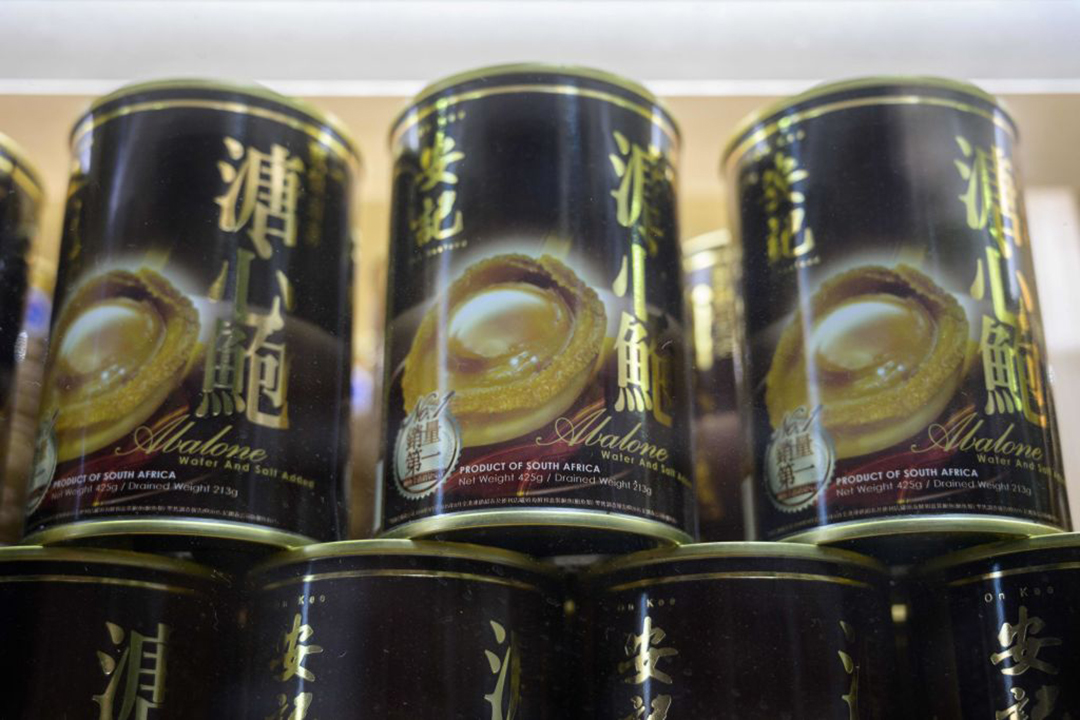Abalone Poaching Fuels Drug Use, Decimates Resources
ADF STAFF
In the early 1990s, a symbiotic relationship began between poachers of South African abalone and organized crime syndicates from China, where the large sea snail is considered a delicacy.
That relationship, which includes African gangs and Chinese drug traffickers, continues to this day.
Called “white gold” because of their pearly underbelly, the snails are considered a luxury item. Sharply rising demand in the 1990s created a multibillion-dollar global export industry — and a booming poaching industry in South Africa.
Of the 56 species of abalone worldwide, five are found in South Africa. One of them, Haliotis midae, is regarded as among the tastiest. The mollusks grow slowly, taking eight to nine years to reach the minimum legal size at which they can be collected.
Once in abundance across two-thirds of South Africa’s coastline, stocks of abalone are declining at unprecedented speeds and are now at critically low levels.
Wildlife trade monitoring group Traffic estimates that 2,000 metric tons of abalone are taken illegally from South African waters every year. The illicit industry is estimated to be worth at least $60 million a year.
“These are among the highest poaching levels we have seen in the last 20 or so years,” Markus Bürgener, South African program officer for Traffic, said in a 2018 documentary called “Empty Shells.”
Making matters worse for local fishermen who obey the law, South Africa reduced its allowable limit of legally harvested abalone to 80 metric tons in 2007.
Traffic estimated that from 2000 to 2018 poachers took at least 96 million abalone from South Africa’s coast.
For most of the 20th century, the abalone population was stable, according to Professor Peter Britz of Rhodes University in Makhanda, South Africa.
“But then in the mid-’90s a perfect storm happened,” he said in a documentary called “White Gold,” describing how the rising demand from China coincided with post-apartheid South Africa rejoining global trade markets. “It stimulated a gold rush for abalone. Very rapidly organized crime came into the picture.
“Initially people were just fishing for themselves, and then soon gangs came in. Chinese syndicates provided the marketing channel to Asia.”
Abalone typically are sold by poachers for a fraction of their value to local gangs, Britz said. Then they are dried and smuggled to neighboring countries such as Eswatini, Lesotho and Namibia before Chinese syndicates export them to Hong Kong.
Over the years, South African gangs and their Chinese buyers developed a barter economy, substituting an exchange of drugs for abalone instead of using cash.
Chinese syndicates, which have operated in South Africa for decades, trade precursor chemicals used to make popular drugs like methaqualone, which is known as “Mandrax” in South Africa, and crystal methamphetamine, which is known locally as “tik.”
Unregulated and easily acquired in China, the precursor chemicals are expensive and difficult to obtain in South Africa.
By 2005, meth had become the leading drug of choice in the Western Cape province, surpassing methaqualone, marijuana and alcohol, according to the South African Community Epidemiology Network on Drug Use.
“Because of the involvement of organized crime, the apparent links to gangs in Cape Town, the links between the trade in abalone and the trade in drugs, there are also some clear negative socioeconomic impacts associated with it,” Bürgener said. “You have whole cohorts of people along the coast that are involved, and their work experience is only within an illicit economy.”
Meth production has declined in South Africa in recent years, as new lines of supply have emerged from Nigeria and the Middle East. Despite these changes, the relationship between the illegal abalone and drug markets continues. And this is bad news for legitimate fishermen.
“It’s inevitable that the fishery will collapse,” Britz said.


Comments are closed.